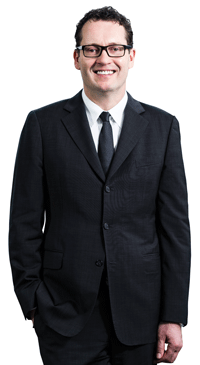 The SVP-lodging services and operations of Marriott International, Asia-Pacific, talks to Greg Lowe about reimagining meetings for Millennials
The SVP-lodging services and operations of Marriott International, Asia-Pacific, talks to Greg Lowe about reimagining meetings for Millennials
How significant is the influence of Millennials and what are you doing to connect with them in meetings
They for sure are decision-makers. The eldest are around 35 years old. Tech firms and ad agencies are run by them. They are also the generation that will travel more than any other, and the way they travel and share their experiences are different from previous generations. They want to collect and share their experiences through social media. They have grown up in a much more visual environment. This affects what they expect to see and experience at an event. These trends have influenced our thinking and the development of Meetings Imagined.
Can you explain more about Meetings Imagined and your other MICE-related digital developments?
[n
Two years ago we took a close look at our meetings business. Back then meetings accounted for 32 per cent of global roomnights. We decided it was time to reinvent that space within our properties.
We focused on the purpose of meetings and identified seven reasons why people meet: promote, celebrate, decide, ideate, network, educate and produce. There are different ways to approach meetings which are dependent on why the meeting is taking place. We decided to put all of our knowledge into one site – MeetingsImagined.com – where we could communicate with meeting planners and we rolled the concept out at 13 hotels across Asia-Pacific.
A picture says more than a thousand words and Meetings Imagined is an intuitive platform which uses thousands of images of our facilities and events to show planners what we can do. Planners and delegates can post pictures of the set-up process or coffee breaks. Our hotel teams can post too, so that helps create some friendly competition between properties to see who gets the most engagement with their content.
We’ve also launched Meeting Services App. It’s a closed-loop system which enables planners to communicate with our events team in real-time from their smartphone or tablet. So, if you’re in a meeting with 160 people and don’t want to leave, you can use the app to request for the lighting or air-conditioning to be adjusted, order more coffee or delay lunch. Our team will respond immediately and inform the planner of how their request is being processed.
The app will soon be able to handle the billing process too, which is a major development as billing is the current pain point for most planners.
Since planners and delegates can post on Meetings Imagined, how do you deal with risks from negative feedback when things go wrong?
Our team does check that the content posted is relevant, but beyond that users can say what they want. In this day and age you cannot try to filter what people say, especially on social media. We try and make sure that events go smoothly. Occasional mishaps happen, but if that’s the case then we use it as an opportunity to learn and improve our services.
How important is it for you to keep innovating and do you ever worry that other operators will simply copy the good ideas that work?
Innovation is fundamental. It’s flattering to be copied. And if we are (followed), then it energises the team to (come up with) something better. Our team in Bethesda (US) has an innovation lab where they do anything from testing room design to developing other products and services. It’s key to developing performance and staying ahead of the crowd.
There’s an ever-growing desire for technology from guests, but it’s also about the hardware and what our teams provide. Events these days are much more of a blend of work and play. Every event is different. If you need to ideate or educate, then there are certain formats for that. However, you can also be very creative. It’s much less about listening to financial reports and watching presentations. We’re using all parts of our properties and even host small groups in the hotel library.
At our own regional operations meeting in Bangkok we broke down into smaller groups, and arranged labs with 20 people. We had a treasure hunt making use of different properties across the city where teams had to make som tum (a spicy Thai salad) in the open kitchen. It’s all about having a more immersive experience. And it needs to be fun. However, rolling these ideas out across 4,000 hotels has its own logistical challenges.
What gets you out of bed in the morning after more than 25 years in the trade?
I love this business passionately. We have an amazing team. And it’s the best time to be in Asia-Pacific, where we’re growing rapidly, entering new markets and building a lot more new hotels. That means we can design our new properties to match the needs of guests and the emerging trends in the market.
At the same time the market and guests from the region are themselves developing. If you look at the JW Marriott Phuket, which opened in 2001, for the first six to seven years it was popular with guests from the US, UK and Europe, then there was a shift to Russia and the Middle East. Now it’s changed again. The number of Chinese, Korean and Indian guests is increasing.
It’s super interesting to see the changing demographics.




 The SVP-lodging services and operations of Marriott International, Asia-Pacific, talks to
The SVP-lodging services and operations of Marriott International, Asia-Pacific, talks to 
















